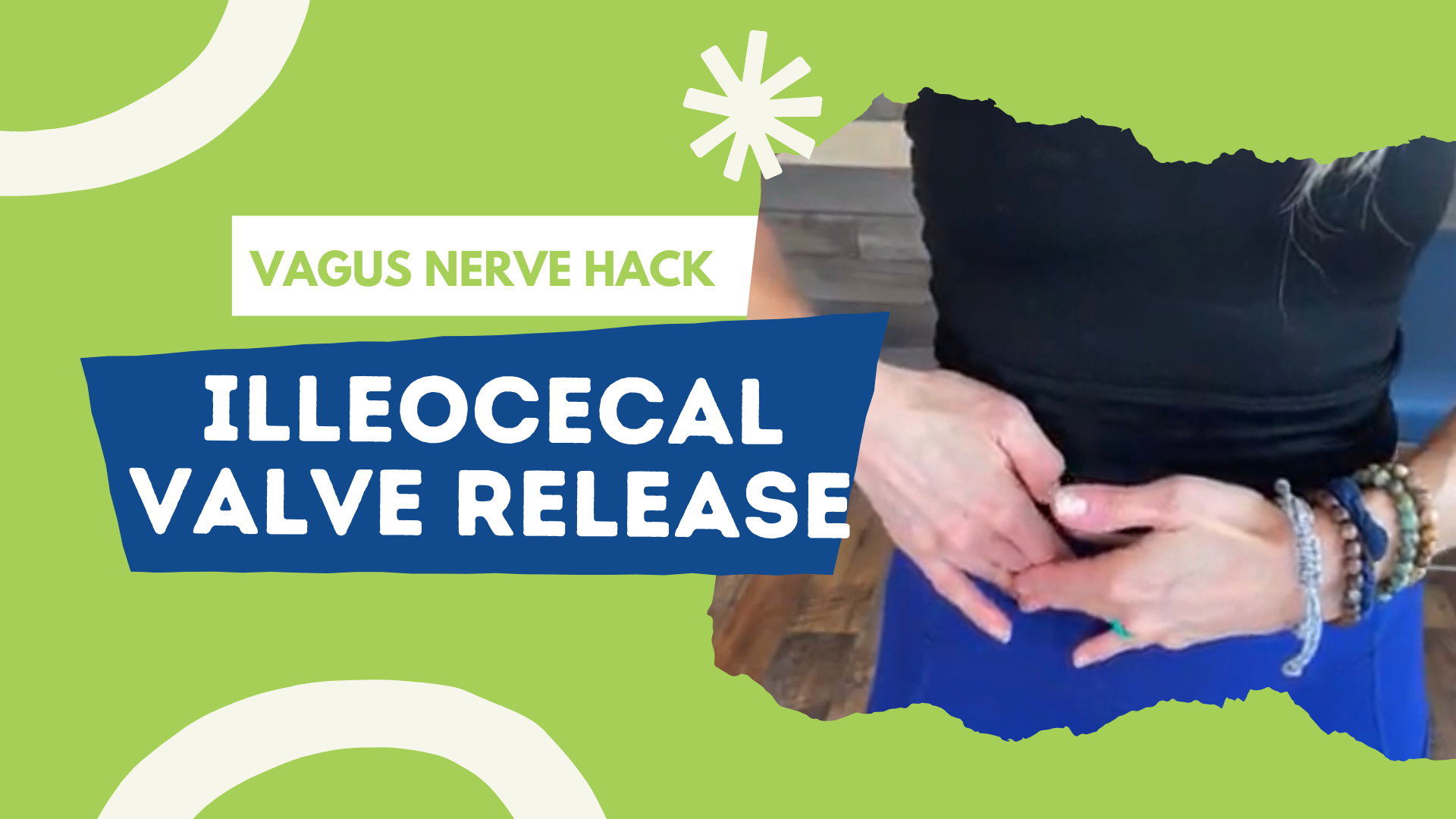Are you experiencing chronic bloating? Perhaps you are experiencing it 20 to 30 minutes after a meal or 2 to 3 hours after a meal, or even as the day goes on, it just progressively gets worse. You have tried so many different things, but you just don’t seem to be able to put a dent in it.
In this blog, we will talk about some of the common causes of bloating and, more importantly, what you can do about it.
It is important to be able to understand what the root causes of your bloating are and how you can begin to heal your body and hopefully feel your best.
As I mentioned, we want to start by assessing when you have your bloating and how it presents to understand the root causes.
Rather watch or listen?
Causes of bloating
1. Poor digestion
I see this as the most common cause of bloating, which can look slightly different for each person. As I mentioned, we want to know if you feel the bloating about 20 to 30 minutes after a meal. This is oftentimes associated with low stomach acid and, perhaps, even low pancreatic enzymes.
Our incredible digestive process begins in the mouth during chewing, where enzymes from saliva initiate the mechanical breakdown of food. Stomach acid is then released to break down proteins, and pancreatic enzymes break down on proteins, carbs, and fats. Bile helps with fat breakdown, and brush border enzymes continue the digestive process. Any disruption in this pathway can push bacteria downstream into the intestines, potentially causing bloating.
In a fight-or-flight state or freeze state, our natural GI motility and digestive capability are compromised. For instance, during lunch, while using the computer or phone, reading, or multitasking, cortisol levels increase, diverting blood flow away from the digestive tract. This slows the digestive process and can be easily addressed to make a significant change in bloating.
2. Nervous system regulation
If we are in a fight-or-flight or freeze state, it not only affects our digestion in the moment but also has overall implications. If every time we eat, or if there’s a fear or apprehension of food leading to a persistent fight-or-flight state, it can contribute to ongoing bloating and dysbiosis in the gut—an imbalance in bacteria. Stress is known to alter the bacterial colonization of the gut, thereby contributing to gut dysregulation.
3. Small Intestinal Bacterial Overgrowth (SIBO)
When considering the microbiome, it’s ideal for the majority of bacterial diversity to be in the large intestine. The small intestine, with only about 3 million Colony Forming Units, is meant to have much fewer bacteria, as it primarily serves as the site for nutrient absorption. An overgrowth of bacteria in the small intestine, especially when consuming fermentable carbohydrates, can lead to gas production. Bloating and gas occurring 2 to 3 hours after eating, particularly with foods like cruciferous vegetables, apples, blackberries, and avocado, may indicate increased gas production, ultimately expelled through the lungs.
If you experience bloating and gas, especially within 2 to 3 hours after a meal or throughout the day, it’s worth evaluating the possibility of Small Intestinal Bacterial Overgrowth (SIBO) as a potential root cause. Additionally, other gut disorders should be considered, such as irritable bowel syndrome (IBS), which encompasses functional bowel disorders, with about 80% of IBS cases being SIBO.
Other factors like leaky gut, resulting from prolonged gut issues, poor digestion, stress, nutrient deficiencies, and inflammation, can contribute to intestinal permeability. When tight junctions in the intestine become compromised, substances like undigested food, pathogens, or toxins may leak into the bloodstream, triggering an immune response. This systemic inflammatory process, coupled with poor nutrient absorption, can also lead to bloating.
Fungal overgrowth or parasites are other factors that can contribute to bloating, making it a challenging symptom to pinpoint in various gut disorders.
4. Food sensitivities, intolerances, and allergies
We need to consider adverse food reactions, which can manifest in various ways. Allergies typically result in mild to severe, immediate, and IgE-mediated reactions. On the other hand, food sensitivities involve delayed responses, occurring on days two, three, or four, and are mediated by IgA and IgG. Intolerances, such as lactose intolerance, lead to immediate reactions after consuming the problematic food, in this case, causing bowel issues. The lack of enzymes to break down the ingested substance triggers an immediate response. It’s essential to recognize that all these adverse food reactions have the potential to cause bloating.
How to address bloating
1. Address your digestion
No matter what you do, if you decide to do any testing, you want to ensure that you’re doing the most fundamental thing, which is putting yourself in a parasympathetic state before eating. Take three breaths before you eat and chew your food 20 to 30 times. Also, consider going for a walk immediately afterward for at least a few minutes to help digestion. If you can implement these with every meal, that will make a significant difference.
2. Testing
If testing is within your capability, I highly recommend a comprehensive stool test, such as the GI-MAP. Alternatively, you can conduct individual tests, examining factors like pancreatic elastase or assessing leaky gut through the biomarker zonulin. A stool test, in particular, provides valuable insights into intestinal health, identifying dysbiosis, parasites, and potential SIBO. If SIBO is a concern, a specific test is available, but you still need to understand why you might have SIBO in the first place.
3. Vagus nerve exercises
Numerous resources are available regarding nervous system regulation. I encourage you to explore my channel or blog, where you’ll find various vagus nerve exercises and somatic practices. You can seamlessly integrate these simple activities into your daily life, assisting in transitioning from a fight-or-flight or freeze state to a state of safety and connection within your body.
4. Identify triggers
Identifying triggers is crucial for proper digestion, connection, and safety. Investigating food sensitivities, intolerances, and allergies is vital. If you find yourself sensitive to almost everything, experiencing reactions to every food, it may indicate a core issue, often linked to a leaky gut.
While eliminating certain foods temporarily can be helpful, it’s not a sustainable solution and may contribute to dysfunctional eating behaviors. Recognize that this approach might be necessary for a specific period, but the key is to move towards understanding what your root causes are and how you can begin to heal whatever they are.
You can explore modified elimination diets or full elimination diets if appropriate for your situation and without a history of eating disorders. These approaches can help uncover food sensitivities. There are simple ways to assess these sensitivities and work towards resolving them.
Key takeaway
In essence, there are many different reasons why you may have bloating, and there are also many ways to identify this information, even by just assessing the timing of when things happen. There are specific tests you can do to understand it for sure, have objective measures, and begin to heal your body, transform your life, and thrive.
If you want to do that with us, please feel free to reach out. We would love the opportunity to help schedule a discovery session. If you want to join our community on our Movement Paradigm app, we would love to have you there. We have lots of nervous system information, monthly challenges, and live Q&A, so we’d love for you to be a part of that as well.
If it was helpful, please give it a like, give it a share, comment, and, of course, subscribe to our YouTube channel, the Movement Paradigm, for weekly tips on mindset, nutrition, and movement.
Other things that might interest you:


